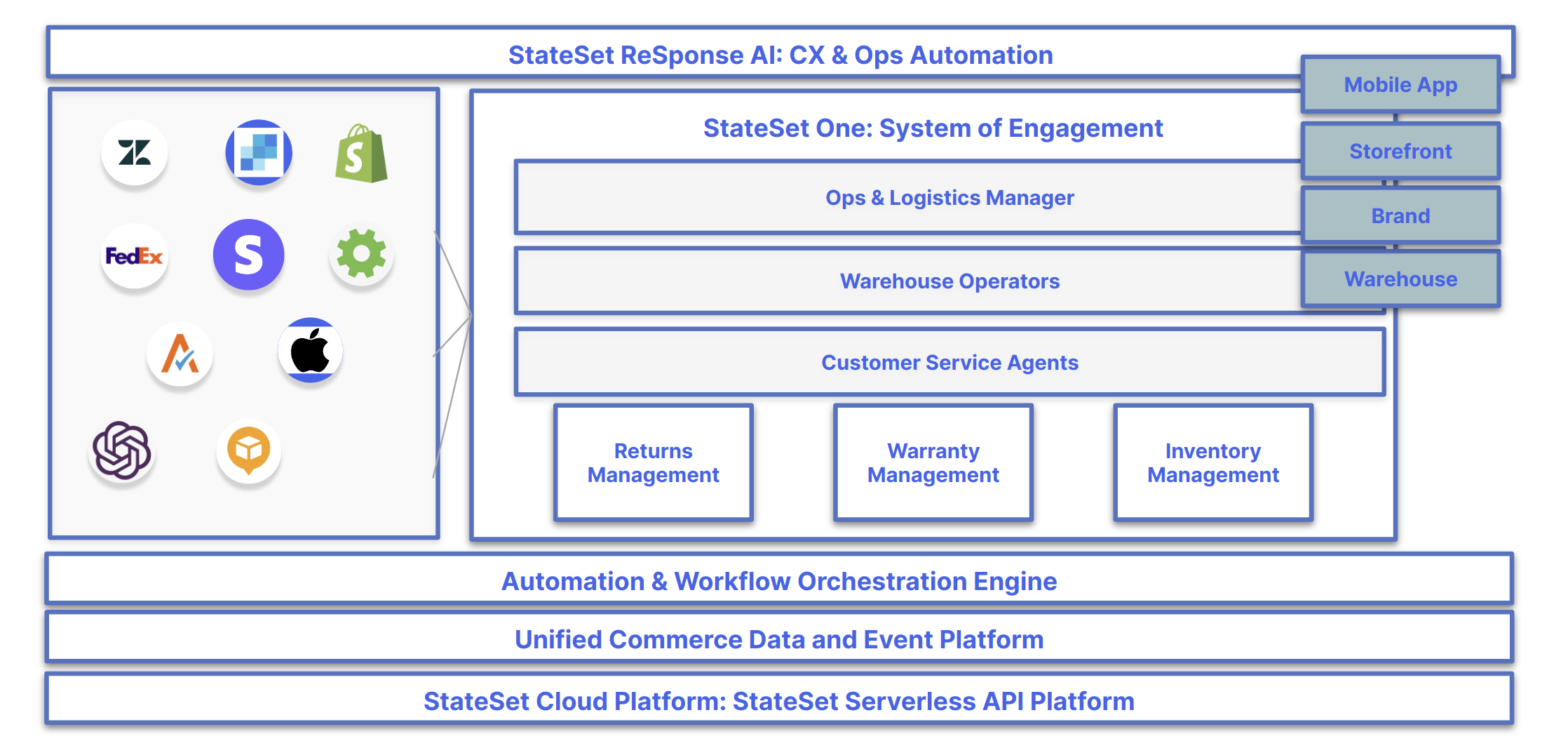Service-as-a-Software: The Autonomous Business Revolution
We’re not building better software. We’re eliminating the need for it.Traditional software gives you tools. StateSet gives you outcomes.
The $4.3 Trillion Problem
Every year, businesses waste $4.3 trillion on inefficient operations:- 60% of employee time spent on repetitive tasks
- 130+ different software tools per enterprise
- 73% of data never analyzed or used
- 8 hours average time to resolve customer issues
The Evolution: From Tools to Outcomes
- Software 1.0: On-Premise Era
- Software 2.0: SaaS Era
- Software 3.0: Service-as-a-Software
The Stone Age of Business Software (1980s-2000s)
Characteristics:- Install on every computer
- Massive IT departments
- Updates via CD-ROM
- Humans do 90% of the work
What Makes Service-as-a-Software Different?
Traditional SaaS vs. Service-as-a-Software
The Six Pillars of SaaS 3.0
1. 🎯 Outcome-Driven Architecture
Traditional software asks: “What features do you need?” StateSet asks: “What do you want to achieve?“2. 🤖 Autonomous Agent Networks
Your business doesn’t run on software. It runs on decisions and actions. StateSet’s agents make both.Customer Success Agent
- Responds to inquiries in less than 1 second
- Resolves 94% without human help
- Learns from every interaction
- Proactively prevents churn
Operations Agent
- Manages entire order lifecycle
- Optimizes inventory in real-time
- Coordinates with suppliers
- Predicts and prevents issues
Growth Agent
- Identifies expansion opportunities
- Executes marketing campaigns
- Optimizes pricing dynamically
- Drives revenue growth 24/7
3. 💰 Performance-Based Pricing
Stop paying for potential. Start paying for performance. Traditional SaaS charges you whether it works or not. StateSet only succeeds when you do.4. 🧠 Collective Intelligence
Every StateSet agent learns from every interaction across our entire network. Your agents get smarter every second—even while you sleep.5. 🔄 Self-Improving Systems
Traditional software degrades over time. StateSet improves autonomously. Week 1: Resolves customer issues in 5 minutes Week 4: Resolves similar issues in 2 minutes Week 12: Prevents those issues from occurring Week 24: Optimizes entire customer experience6. 🎭 Adaptive Interfaces
The interface adapts to you, not the other way around.- CEOs see strategic insights and outcome metrics
- Managers see team performance and optimization opportunities
- Operators see task queues and exception handling
- Customers see natural conversations and instant resolutions
Real-World Impact: SaaS 3.0 in Action
Case Study: TechStyle Fashion Group
Traditional Approach:- 15 customer service reps
- 8-hour response time
- 68% satisfaction rate
- $3M annual cost
- 1 human supervisor + AI agents
- 30-second response time
- 95% satisfaction rate
- $700K annual cost
The Numbers Don’t Lie
The StateSet Service-as-a-Software Platform
1. The Autonomous Operating System

StateSet One: Where AI Agents Orchestrate Your Entire Business
- Self-Organizing Agents: Automatically form teams to tackle complex problems
- Predictive Operations: Fix problems before they happen
- Adaptive Workflows: Continuously optimize based on outcomes
- Human-in-the-Loop: You make strategic decisions, AI handles everything else
2. The Agent Marketplace
3. Guaranteed Outcomes
We don’t just promise results—we guarantee them:The Mathematics of Transformation
Let’s talk ROI. Here’s what happens when you switch to Service-as-a-Software:Implementation: From Zero to Autonomous in 7 Days
Day 1-2: Discovery & Design
Our AI analyzes your entire operation:- Maps all workflows and decision points
- Identifies automation opportunities
- Designs optimal agent configuration
Day 3-4: Agent Deployment
Deploy pre-trained agents customized for your business:- Customer service agents go live
- Operations agents start learning
- Integration with existing systems
Day 5-6: Learning & Optimization
Agents rapidly improve through accelerated learning:- Process historical data
- Learn from your best employees
- Optimize for your specific KPIs
Day 7: Full Autonomy
Your business runs itself:- 90%+ tasks handled automatically
- Humans focus on strategy
- Continuous improvement begins
The Future of Business is Autonomous
2025: The Tipping Point
- 50% of customer interactions handled by AI agents
- Early adopters see 10x productivity gains
- Traditional software companies scramble to adapt
2026: The New Normal
- Autonomous operations become table stakes
- Businesses run with 90% fewer employees
- Focus shifts from operations to innovation
2027: The Autonomous Economy
- AI agents negotiate with other AI agents
- Entire supply chains self-organize
- Human creativity unleashed at scale
Join the Revolution
Welcome to Service-as-a-Software. Welcome to StateSet. The future doesn’t wait. Neither should you.